KNGF Guidelines - Neck pain
The severity of Neck pain is classified in 4 grades
Grades of Neck pain
Grade I
neck pain with no signs of suggestive major structural pathology and no/ minor interference with ADLs
Grade II
neck pain with no signs of suggestive major structural pathology but may significantly affect ADLs
Grade III
neck pain with no signs of suggestive major structural pathology but may significantly affect ADLs
It has neurological symptoms (hernia, spinal stenosis)
Symptoms → reduced tendon reflexes, muscle weakness, or sensory disorders (hypoesthesia or hyperesthesia) in the upper extremity.
Grade IV
neck pain that suggests major structural pathology, or serious condition
Major pathologies → fracture, vertebral dislocation, injury to the spinal cord, infection, neoplasm, or systemic disease including the inflammatory arthropathies.
Physical therapy is indicated for PT with grade I -III neck pain, grade IV refer GP
Course and prognosis
70 % of people suffer from an episode of neck pain in their lives
usually no interference with ADLs
Usually PT recovers before 6 weeks, if pain is still there after 6 weeks the course of recovery is considered “deviant“
Neck pain can change in severity
recurrent pain and limitation in ADLs in the first 6 weeks after the first symptoms are considered the same episode of neck pain
“recurrent pain“ is used when pain recurs after 6 weeks
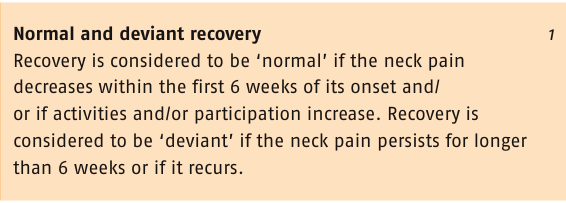
there is a distinction between work related neck pain and trauma related neck pain
NP after trauma → result of trauma (whish -plash)
NP due to work → its classified into subgroups
Diagnostic process
We need to distinguish between the grades
History
1) exclude grade IV with red flags (screening)
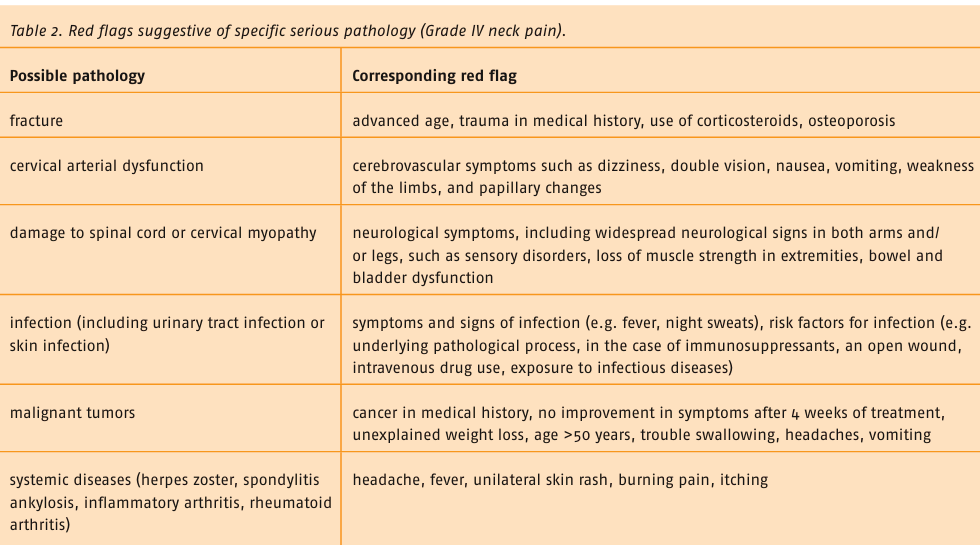
2) Anamnesis
exclude Grade III looking for signs indicating cervical radiculopathy (neurological signs)
nature of complaints (can they do ADLs?, does it has effects on their participation levels?)
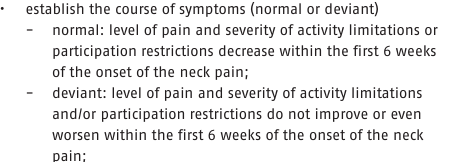
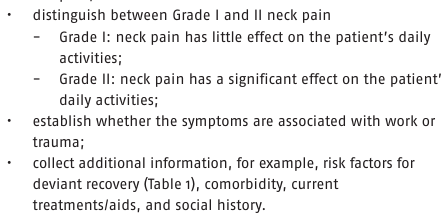

Physical examination
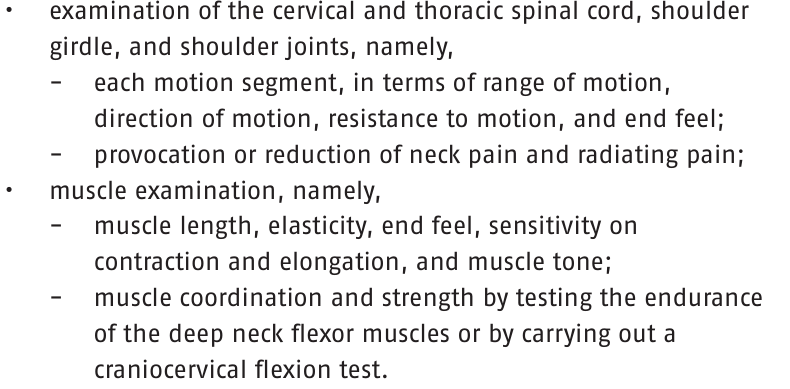
Grade III (cervical radiculopathy) has a different treatment than Grade I & II
Grade III
neurological symptoms, muscle weakness, reduced reflexes, or sensory disorders
to rule Grade III out → Spurling’s test + Traction/ distraction test + ULTT x median nerve
Grade III excluded if there are any neuro symptoms
basically this:
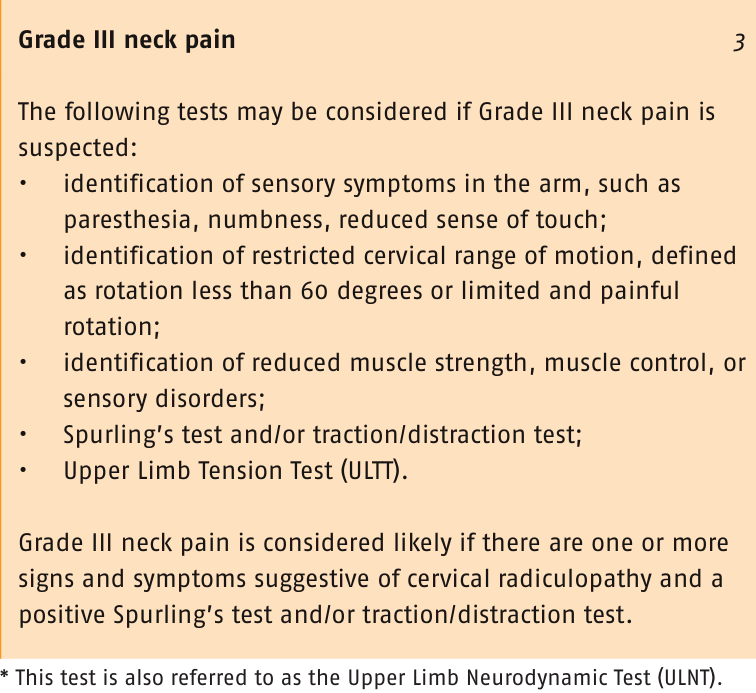
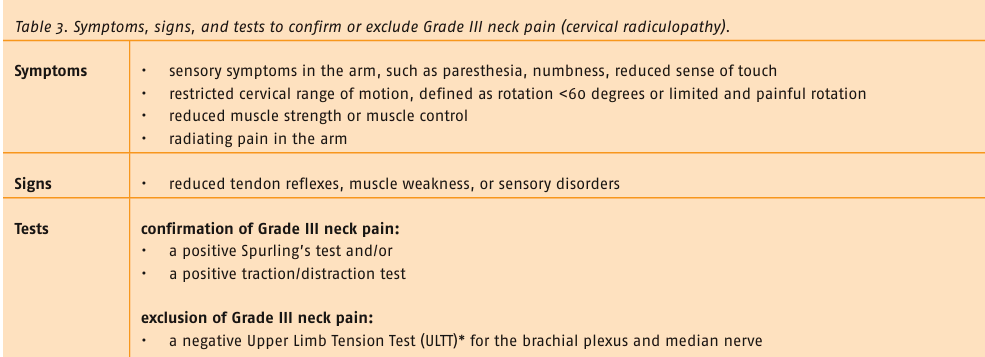
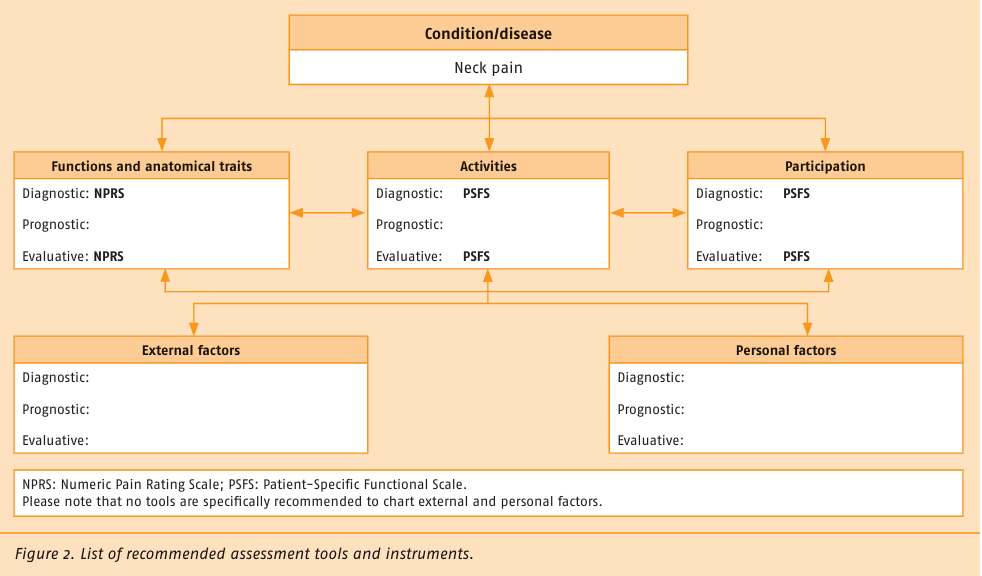
Questions to differentiate the different Grades
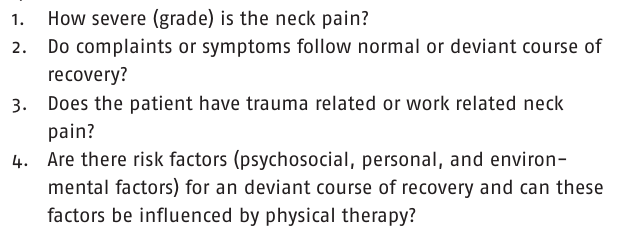

Treatment profiles
they are organized based on:
the severity or grades of NP
course of symptoms (normal/deviant)
presence of psychosocial factors
If PSCH. Fact. play a role → profile B or C
If Grade I → profile A
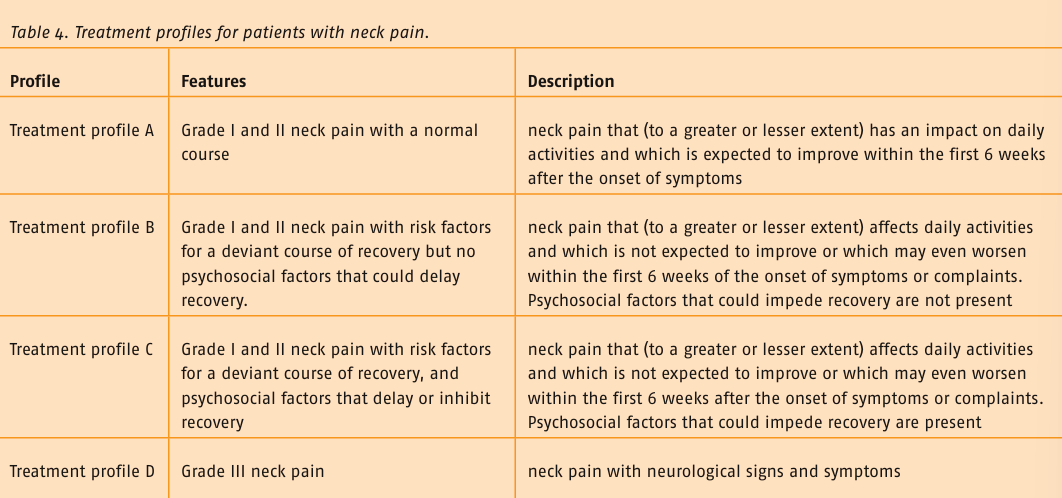
Treatment profile A (Grade I & II with normal course)
short -term treatment
information and advice
max 3 treatment sessions
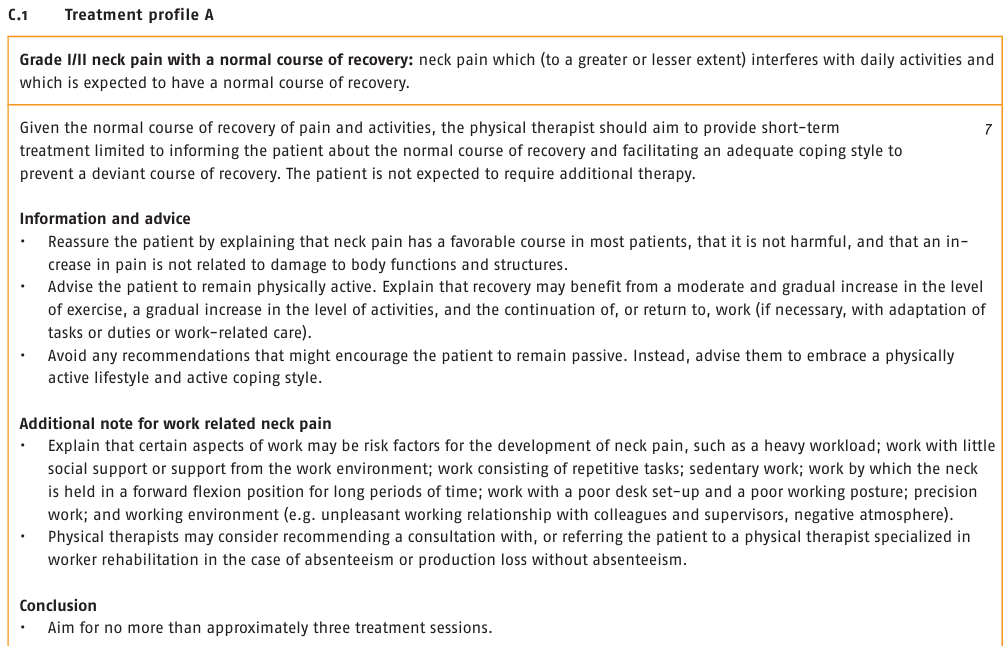
Treatment profile B → Grade I and II with deviant course of recovery, PSCH Fact NOT present
Info and advice as Profile A
Add therapy:
exercise therapy + cervical/thoracic mobilizations